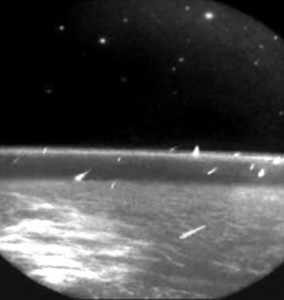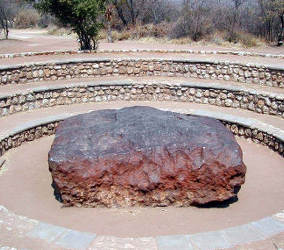Meteor shower

We recommend you see the meteor shower calendar 2016
What is a meteor shower?
A meteor shower occurs when the trail of interplanetary debris like the one left behind by comets or asteroids enters the Earth’s atmosphere. The interplanetary debris is mostly made of space rocks also called meteoroids.
As the meteoroids fall toward Earth they produce heat throughout the rock, this causes the meteoroid to heat up. The streak of intense light we see is the hot air behind the burning rock.
When Earth encounters many meteoroids at once we call it a meteor shower.
What is the radiant?
Meteor showers are usually named for the constellation in which their radiant appears. The most common and popular meteor showers are: Perseus, Leonids, Gemenids, Lyra
The radiant of a meteor shower is the point in the sky, from which to an observer on the surface of the Earth meteors appear to originate. The radiant is expressed in terms of hours, minutes and seconds. However, it is occasionally expressed in terms of degrees. You could convert radiant from one form to the other.
Advice for observers
Depending on the latitude of the observer, a meteor shower may or may not be visible. Therefore, we recommend you to calculate whether the radiant will be visible from your particular geographical location. We have made some calculations of our own. For example, check out the visibility of Quadrantids from the United States.
Moreover, it is important to know the rate of meteors(ZHR) and know what to expect. The Zenithal Hourly Rate(ZHR) of every meteor shower indicates the maximum number of meteors an ideal observer would see in perfectly clear skies with the shower radiant overhead.
If you are certain that the meteor shower will be visibile in your city, then, the following is our advice to optimize the view:
- Lie on your back and look straight up. Avoid looking at the Moon as the moon obstructs the view. The following are links to our moon calendars so you know the phase of the moon for any given day of the year:
- Get as far away from the city as possible. City light pollution obstructs the view.
Meteorites
It is frightening to imagine all that planetary debris flying over us. In fact, meteors enter Earth’s atmosphere at speeds ranging from 25,000 MPH to 165,000 MPH. Most of the meteors disintegrate or burn off in the air and the remaining pieces fall into the ocean. Those that get to hit the land are called "meteorites".
 Image 1. (cortesy of Peter Jenniskens)
Image 1. (cortesy of Peter Jenniskens)In 1997, satellite MSX captured, from its orbit around Earth, images during the peak day of the Leonids meteor shower (see Image 1).
On February 15, 2013, a meteor passed by the skies of the Russian Ural Mountains and landed 1500 km east of Moscow producing a sonic explosion that caused severe material losses. The explosion was equivalent to 300,000 tons of TNT which destroyed windows, damaged over 3,000 buildings and hurt more than 1,000 people.
 Image 2. Hoba Meteorite (over 100,000 pounds).
Image 2. Hoba Meteorite (over 100,000 pounds).The biggest meteorite found on Earth is the Hoba meteorite discovered in Namibia in 1920. The main mass is estimated at more than 60 tonnes (see Image 2).